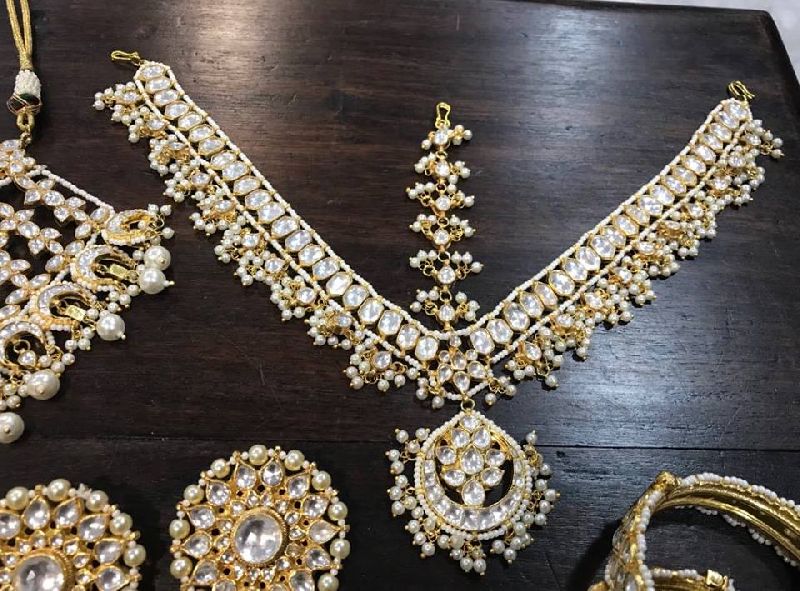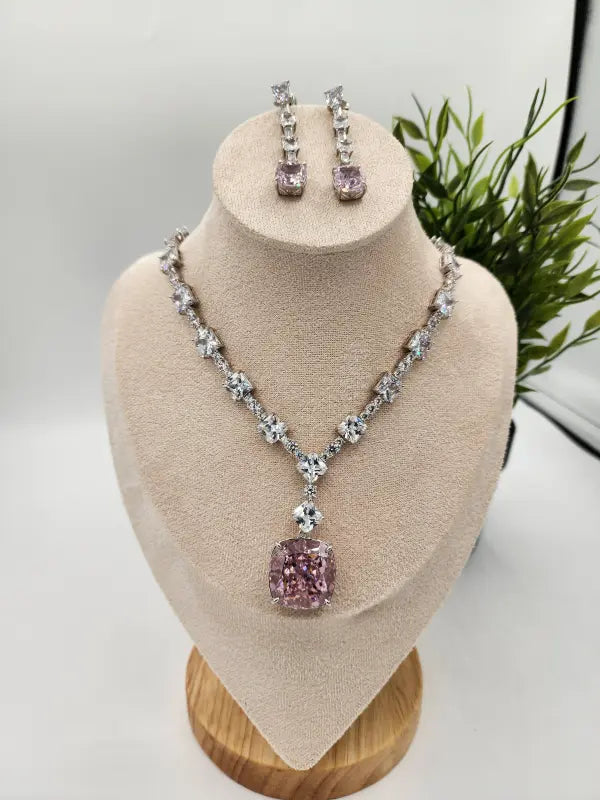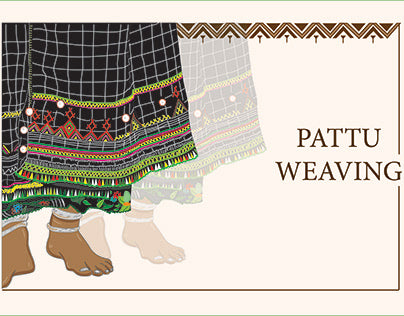Kundan Jadai, often referred to as Kundan jewelry, is a traditional form of gem setting that originated in Rajasthan, India. This intricate art form involves embedding precious and semi-precious stones into metal surfaces, creating exquisite and timeless pieces of jewelry. The technique, introduced to Rajasthan by the Mughals, has evolved over centuries into a refined craft known for its beauty and craftsmanship.
The Technique of Kundan Jadai

Kundan Jadai involves a meticulous process that starts with preparing the base of the jewelry piece. The primary step in this art form is cleaning and preparing gold leaf foil sheets. These foils are then placed longitudinally between the metal framework and the stones, ensuring a secure fit. The malleability of pure gold allows for easy compression, which helps in securely holding the stones in place. This technique ensures that the precious gems, including diamonds, rubies, tourmalines, emeralds, and sapphires, are firmly embedded.
The use of gold or silver foil beneath the stones is crucial as it enhances the reflection of light through the gemstones. This not only increases the brilliance of the stones but also adds to their overall value. The careful embedding of these gems results in jewelry that is not only visually stunning but also durable.
The Craftsmanship Behind Kundan Jewelry

Creating Kundan jewelry is a multi-step process that involves several intricate stages:
- Ghaat (Framework Design): The process begins with the creation of a skeletal outline or framework of the jewelry piece. This outline serves as the base for the subsequent stages of the jewelry-making process.
- Paadh (Wax Moulding): Once the Ghaat is completed, wax is applied onto the framework and molded according to the desired design. This stage ensures that the design is accurately transferred to the metal base.
- Khudai (Stone Setting): In this stage, the precious or uncut stones are set into the framework. The stones are carefully placed to ensure a perfect fit and alignment.
- Meenakari (Enameling): After the stones are set, the jewelry piece undergoes the Meenakari process. This involves applying enamel to the design details, adding color and depth to the piece.
- Pakai (Gold Foil Soldering): During the Pakai stage, gold foils are soldered onto the framework. These foils grip the stones, securing them in place and adding to the overall elegance of the jewelry.
- Chillai (Polishing): The final stage is the Chillai process, where the gems and the overall piece are polished. This step ensures that the jewelry shines with a high level of brilliance and finesse.
The Legacy of Kundan Jadai

Kundan Jadai has a rich history and remains an integral part of Rajasthan's cultural heritage. The artistry and precision involved in creating Kundan jewelry make it a prized possession for many. Each piece of Kundan jewelry tells a story of skilled craftsmanship and timeless beauty. The tradition continues to thrive, with artisans preserving the age-old techniques while incorporating contemporary designs.
In conclusion, Kundan Jadai is more than just a method of jewelry making; it is a celebration of art, history, and craftsmanship. The meticulous process and the resulting exquisite jewelry pieces highlight the rich cultural heritage of Rajasthan, making Kundan Jadai a treasured tradition in the world of fine jewelry.
FAQs on Kundan Jadai
- What is Kundan Jadai? Kundan Jadai is a traditional Rajasthani jewelry-making technique that involves embedding precious and semi-precious stones into a metal base, usually gold, using a gold leaf foil to secure the stones and enhance their brilliance.
- How is Kundan jewelry made? The creation of Kundan jewelry involves several steps: designing the framework (Ghaat), molding with wax (Paadh), setting stones (Khudai), applying enamel (Meenakari), soldering gold foils (Pakai), and polishing the final piece (Chillai).
- What types of stones are used in Kundan Jadai? Kundan jewelry typically features a variety of precious and semi-precious stones, including diamonds, rubies, emeralds, sapphires, and tourmalines.
- Why is gold foil used in Kundan Jadai? Gold foil is placed beneath the stones to enhance their light reflection, which increases the brilliance and overall value of the gemstones.
- How does Kundan Jadai differ from other jewelry techniques? Kundan Jadai is distinct for its use of gold foil to secure and highlight gemstones, as well as its multi-step process involving wax molding, stone setting, enameling, and polishing, which differentiates it from other gem-setting techniques.




